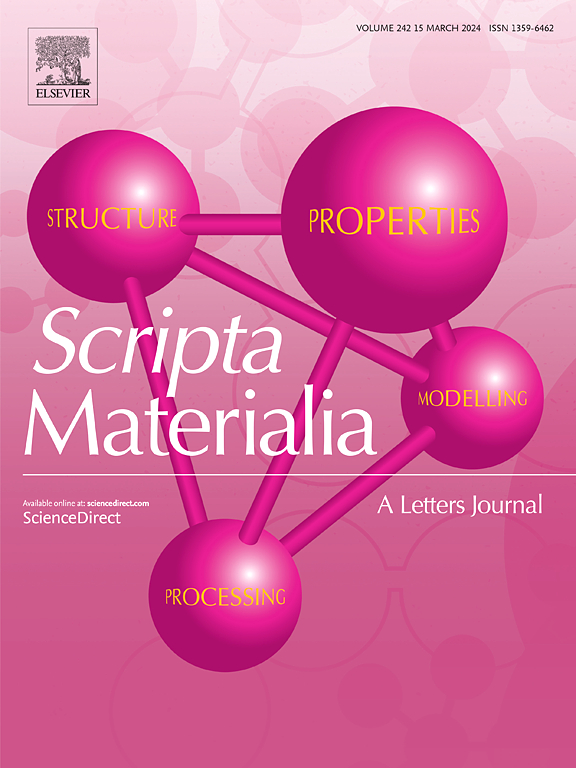通过热处理提高高强度马氏体钢的抗氢脆性能
IF 5.3
2区 材料科学
Q2 MATERIALS SCIENCE, MULTIDISCIPLINARY
引用次数: 0
摘要
本研究提出了一种构建双相异质结构的新方法,以提高高强度马氏体钢的抗氢脆性能,同时保持1200 MPa以上的抗拉强度。通过热处理,获得了一种独特的双相组织,其特征是细化的马氏体亚结构和沿着先前奥氏体晶界(pagb)动态转变的铁素体晶粒。降低变形温度增加了铁素体体积分数和细铁素体晶粒对pagb的覆盖,从而降低了氢相关晶间断裂的面积分数。值得注意的是,在700°C下,60%的压缩完全抑制了氢相关的晶间断裂,即使在充满氢的状态下,也表现出了出色的强度和延展性。动态转化铁氧体对pagb的覆盖是提高其抗氢脆性能的关键因素,覆盖越广,其抗氢脆性能越好。这些发现为具有优异抗氢脆性能的高强度马氏体钢提供了有价值的组织设计概念。本文章由计算机程序翻译,如有差异,请以英文原文为准。

Improving hydrogen embrittlement resistance in high-strength martensitic steels via thermomechanical processing
This study proposes a novel approach for architecting dual-phase heterostructure to enhance hydrogen embrittlement resistance in high-strength martensitic steels while maintaining a tensile strength above 1200 MPa. Through thermomechanical processing, a unique dual-phase structure was achieved, characterized by a refined martensitic substructure and dynamically transformed ferrite grains along the prior austenite grain boundaries (PAGBs). Lowering the deformation temperature increased the ferrite volume fraction and the coverage of PAGBs by fine ferrite grains, which consequently reduced the area fraction of hydrogen-related intergranular fracture. Notably, 60 % compression at 700 °C completely suppressed hydrogen-related intergranular fracture, demonstrating an exceptional combination of strength and ductility even in hydrogen-charged state. The coverage of PAGBs by dynamically transformed ferrite was a critical factor in enhancing the hydrogen embrittlement resistance, with higher coverage correlating with improved hydrogen embrittlement resistance. These findings provide valuable microstructure design concepts for high-strength martensitic steels with superior hydrogen embrittlement resistance.
求助全文
通过发布文献求助,成功后即可免费获取论文全文。
去求助
来源期刊

Scripta Materialia
工程技术-材料科学:综合
CiteScore
11.40
自引率
5.00%
发文量
581
审稿时长
34 days
期刊介绍:
Scripta Materialia is a LETTERS journal of Acta Materialia, providing a forum for the rapid publication of short communications on the relationship between the structure and the properties of inorganic materials. The emphasis is on originality rather than incremental research. Short reports on the development of materials with novel or substantially improved properties are also welcomed. Emphasis is on either the functional or mechanical behavior of metals, ceramics and semiconductors at all length scales.
 求助内容:
求助内容: 应助结果提醒方式:
应助结果提醒方式:


